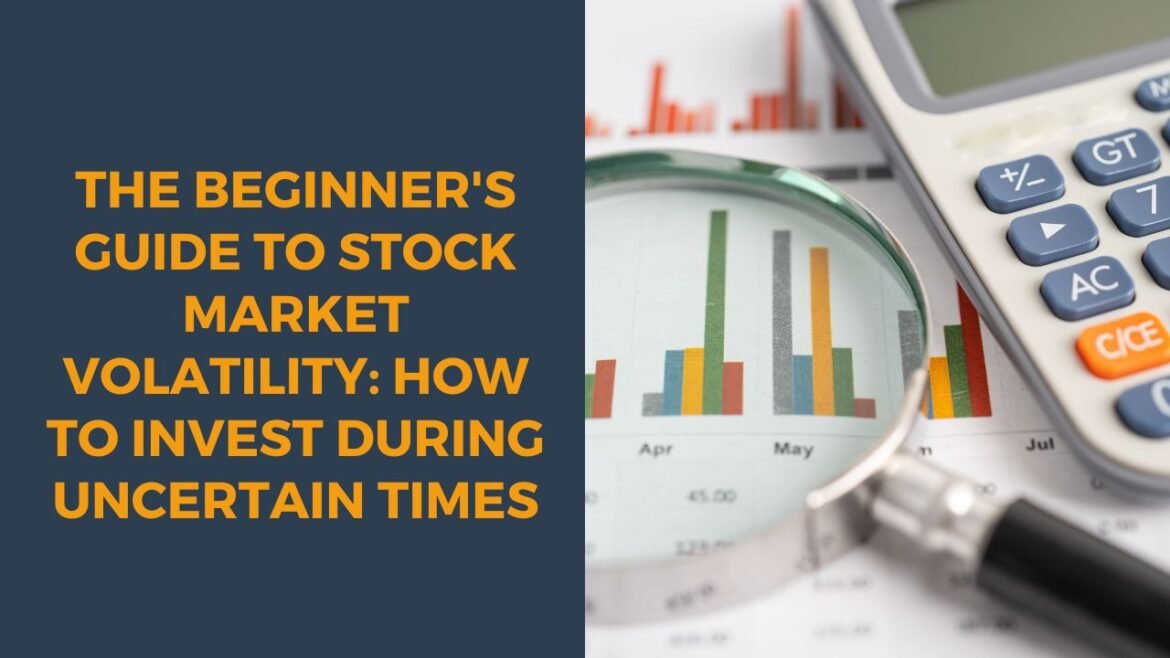For anyone new to the world of investing, stock market volatility can feel like a rollercoaster ride – exhilarating one moment, terrifying the next. The sight of sharp drops or rapid swings can easily deter beginners, leading to panic selling or missed opportunities. However, understanding how to invest during uncertain times is a critical skill that can transform market fluctuations from a source of fear into a pathway for long-term wealth accumulation.
Volatility, characterized by rapid and unpredictable price movements, is a natural and inherent part of the stock market. It’s not a sign that something is fundamentally broken, but rather a reflection of various economic, political, and social factors influencing investor sentiment. The key for beginners isn’t to avoid volatility, but to learn how to navigate it strategically.
This beginner’s guide to stock market volatility will demystify market swings, explain their causes, and most importantly, provide actionable strategies on how to invest during uncertain times. We’ll equip you with the knowledge to manage risk, avoid common pitfalls, and build a resilient investment portfolio that can weather any storm and continue to grow over the long haul.
Understanding Stock Market Volatility
Stock market volatility refers to the degree of variation of a trading price series over time. High volatility means prices are changing rapidly and unpredictably, while low volatility means prices are relatively stable.
Common Causes of Volatility:
- Economic Data: Inflation reports, unemployment figures, GDP growth, interest rate changes.
- Geopolitical Events: Wars, trade disputes, political instability.
- Company-Specific News: Earnings reports, product recalls, management changes.
- Investor Sentiment: Fear, greed, and herd mentality can amplify market movements.
- Global Events: Pandemics, natural disasters.
Why Volatility Matters for Beginners: While it can be unsettling, volatility creates opportunities. When prices drop, assets become cheaper, allowing investors to buy more shares for the same amount of money. This is often referred to as “buying the dip.”
How to Invest During Uncertain Times: Strategies for Beginners
Navigating a volatile market requires discipline and a long-term perspective. Here are key strategies:
- Don’t Panic Sell: This is the most crucial rule. Selling during a downturn locks in your losses. Historically, markets recover, and patient investors are rewarded.
- Focus on Long-Term Goals: Remember why you’re investing. For most beginners, it’s for long-term goals like retirement or a down payment. Short-term market swings are less relevant over decades.
- Dollar-Cost Averaging (DCA): This is one of the most effective strategies for beginners. Instead of trying to time the market, invest a fixed amount of money at regular intervals (e.g., $100 every month), regardless of market conditions.
- Benefit: When prices are high, you buy fewer shares; when prices are low, you buy more shares. Over time, this averages out your purchase price and reduces the risk of investing a large sum at a market peak.
- Diversification: Don’t put all your eggs in one basket. Spread your investments across different asset classes (stocks, bonds, real estate), industries, and geographies. This helps cushion your portfolio during downturns in specific sectors.
- For Beginners: Low-cost index funds and ETFs are excellent tools for instant diversification. Learn about these funds: ETFs vs. Mutual Funds: Which is Better for Your Long-Term Portfolio?.
- Invest in Quality Companies: During volatile periods, strong companies with solid fundamentals, healthy balance sheets, and consistent earnings tend to weather the storm better. Focus on established leaders rather than speculative ventures.
- Maintain an Emergency Fund: Before investing, ensure you have a robust emergency fund (3-6 months of living expenses) in a high-yield savings account. This prevents you from being forced to sell investments during a downturn to cover unexpected expenses. Build your emergency fund: Build Your Financial Fortress: The Essential Guide to Emergency Funds.
- Rebalance Your Portfolio (Periodically): Over time, market movements can shift your asset allocation. Periodically (e.g., once a year), rebalance your portfolio back to your target allocation. This often means selling some assets that have performed well and buying more of those that have underperformed, which is essentially “buying low and selling high.”
- Educate Yourself: The more you understand about how markets work, the less intimidating volatility becomes. Read reputable financial news, books, and educational resources. A great resource for investing basics is Investopedia.
Avoiding Common Beginner Mistakes During Volatility
- Chasing Hot Stocks: Don’t buy into hype or follow “get rich quick” schemes.
- Timing the Market: It’s nearly impossible to consistently buy at the bottom and sell at the top. Focus on time in the market, not timing the market.
- Over-Leveraging: Avoid investing with borrowed money, especially during uncertain times.
- Ignoring Your Risk Tolerance: Only invest what you can afford to lose without it impacting your financial stability.
Conclusion: Investing Smartly Through Market Swings
Stock market volatility is an unavoidable aspect of investing, but it doesn’t have to be a barrier for beginners. By adopting a disciplined, long-term approach and utilizing strategies like dollar-cost averaging and diversification, you can transform market downturns into opportunities for growth.
Remember, the goal is not to eliminate risk, but to manage it intelligently. By staying informed, avoiding emotional decisions, and focusing on your long-term financial objectives, you can confidently invest during uncertain times and build a resilient portfolio that thrives through all market cycles.
Discover more from Motive Money
Subscribe to get the latest posts sent to your email.
